Up Close with Brittany Vocke
Brittany Vocke was the top female age grouper at the 2020 IRONMAN Florida, and we sat down with her and her dog Turtle to learn more about this fast woman. She was born and raised in Virginia but moved to California in 2014 and seems to have adjusted well, and under the guidance of her coach Scott DeFilippis she has stepped up her game.
Slowtwitch: Thank you for your time.
Brittany Vocke: Thank you Herbert for taking the time and interest to interview me. I am happy to answer any questions you have.

ST: You now live in Southern California but were raised in Virginia. What brought you to Oceanside in the first place?
Brittany: I’m a happy transplant. Yes, I was born and raised in Northern Virginia, but in 2014 I realized I needed a change and always wanted to live in California. Being an experienced club swim coach gave me a great foundation and it didn’t take long before I was hired by a team in Orange County California. I literally packed 5 suit cases, my bike, and boarded a plane on a hope and a dream. I moved to Oceanside in 2017 and this past year I decided to change careers and started working for WYN republic and MALO republic, which I absolutely love, while really focusing on coaching triathletes for my team, KIS Coaching.
ST: With COVID-19, have you been back recently to see your folks?
Brittany: I actually haven’t been back to Virginia for a while. My mother and sister were going to visit this summer, but COVID-19 derailed those plans. Hopefully next year the world is in a better place and they can make a trip out.
ST: Were you happy with your race in Florida?
Brittany: I was very happy with my race in Florida. I have been working with my coach, Scottie DeFilippis, for a while now and am very fortunate I get to train with him and his wife, Carrie Lester, in person. We have a little squad which includes another one of Scotties’ athletes who is going to race pro and our other local friend that joins us for rides. In addition, I work with Lawrence Van Lingen, The Innerunner, to improve my run form. All of that run work and training with Scottie, Carrie, and the rest of our KIS squad has helped me develop tremendously in the sport. I felt Florida was a huge breakthrough and it really showcased the work I’ve been putting in.
ST: When did you arrive in Panama City and how was the trip to get there?
Brittany: I flew into Panama City Beach Wednesday evening – 3 days before the race. The travel felt like the same old deal except everyone was wearing masks. That’s usually the time frame I get there for an IRONMAN. I think it gives me good enough time to travel and then get settled in without any stress.
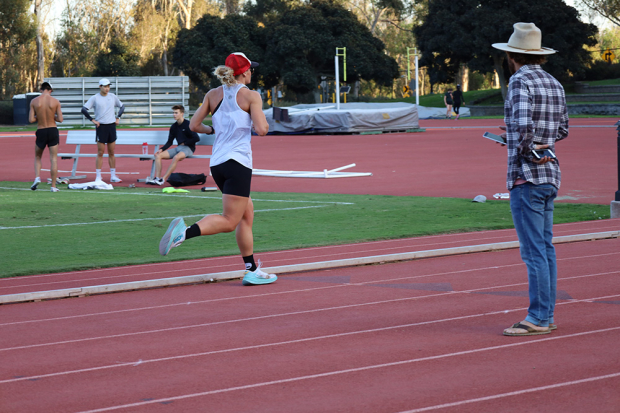
ST: How do you spend those days before the race?
Brittany: I occupy myself with my final training sessions that just keep my body moving and ready to race. Besides those session, I just relax and watch a lot of Netflix or Hulu. It is pretty uneventful, but it’s my way of turning my brain off from triathlon and not overthinking or stressing about the race. I’ve learned that all you can do is put the training in, and let the race be what it will be.
ST: Do you have a routine on race morning, and has it refined or changed over time?
Brittany: Race morning is usually a 3:00AM alarm set and then 2 additional alarms of 3:10 and 3:15 which is when I actually wake up [laughs]. I have my usual caffeine drink I use and then will eat my breakfast. Breakfast is one donut and a banana. I know people are probably cringing hearing donuts, but it’s easy to eat on a nervous stomach and gives me quick calories. This has been my race mourning routine the past 3 seasons.
ST: In my view there is nothing wrong with having a donut, but just a banana and a donut seems like very little food prior to a long race, or really on any morning.
Brittany: Yeah, thinking about it, it’s not that much, but it works for me. My stomach is very sensitive – so it is best not to overload on food race morning. Two days before the race is when I really make sure to take in enough calories that can carry into race day. And I make sure it’s all food I am used to. The golden rule is, nothing new during race week.
ST: Swimming is your background and your time in Florida was 57:54. Talk about that effort.
Brittany: To be honest, the swim was OK. It wasn’t great for me, but it was a tough swim. It was a 2-loop course around the pier with a soft sand beach run between loops. The water was choppy past the pier making it fun, but slow. I remember looking at my watch after the first loop and cringing a bit at my time. The second loop was harder because of how congested the course was. I just tried my best to relax and get through it.
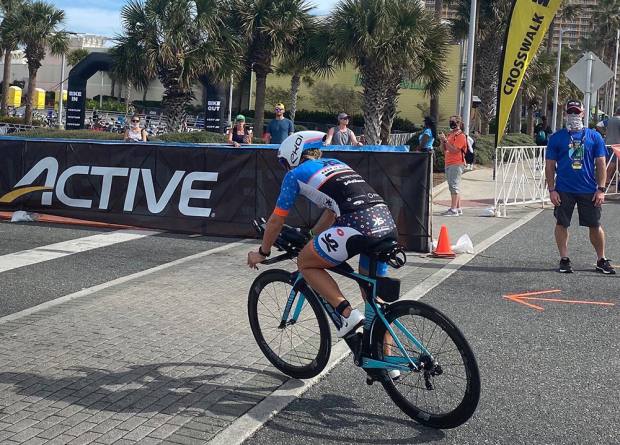
ST: What are some of your swimming personal records?
Brittany: I believe my fastest swim in an Ironman is in the 54-minute range. I did swim a 44 mins in Cozumel a few years ago, but that is a very fast swim that goes with the current.
ST: Can you talk about your weekly swim training and describe one of your harder workouts?
Brittany: I usually have 5 swims a week. In a non-COVID world, 4 of the 5 would be with our squad, and the 5th would be a recovery swim on my own after a run. Right now with Covid-19 restrictions, all of my swims have to be solo. We have a few staple swim sessions we do throughout the year. I think the hardest one is a threshold 100s set where we start off with an easy-easy interval and work all the way down to an interval you are making by only about a second. It’s always on a Monday, usually after a big weekend of training, so chances of a meltdown are pretty high [laughs].
ST: What is the pool length in that pool and how fast are you swimming these 100s?
Brittany: Pre COVID, we always did that set in a long course meters pool. The fastest interval we worked up to was 1:20. That was in early March before pools shut down.
ST: Were you happy with the 4:57:49 bike split?
Brittany: I was very happy with my bike split. I tried to stay a little more conservative in the beginning and really push on the last 40 something miles. It worked pretty well because the first 3/4 of the race was almost all headwind and the last bit was a really nice tail wind. I think I did a good job of staying in my power ranges with the tough headwinds and then really let it fly with the tail wind.
ST: Your coach Scott DeFilippis thinks that you can gain another 10 minutes on the bike with a better fit alone. How much improvement on such a course in total do you think is possible?
Brittany: Yeah, Scottie has already discussed his plan to clean up my aerodynamics on the bike for next season. Just like he has said, about 10 minutes could potentially be taken off with that alone I hope, and with more training in my legs maybe another 5? I’m not too sure as I never want to put a limit on what I can do.
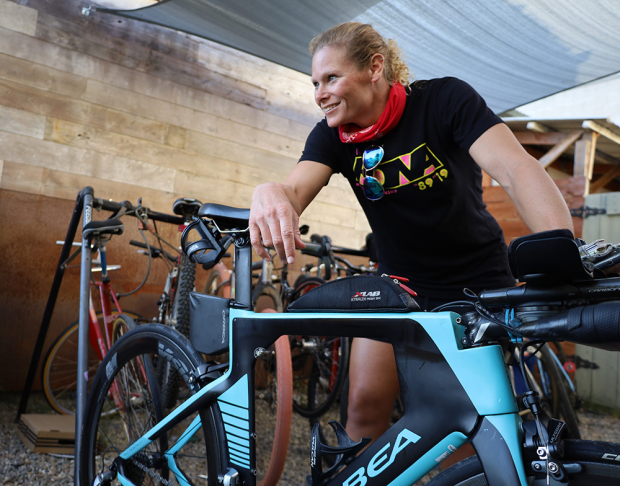
ST: What is your weekly bike training like?
Brittany: My weekly bikes are a mix of indoor and outdoor riding. Wednesdays and Saturdays are outside rides and Monday and Friday rides are usually an indoor turbo session. Wednesdays are mostly time trial session and Saturdays are most likely something really long with a lot of climbing.
ST: When you ride indoors to you use any specific platform, or is it based simply on task?
Brittany: While they seem to be very popular these days, I personally don’t use any online virtual riding platforms for my indoor bikes. I just hook my back tire up to my trainer and use my watch and power meter to see my numbers. All of those sessions are interval and effort level base, which Scottie inputs into my training peaks.
ST: Did you know at all where you were in the race when you started the marathon, and how did it go from there?
Brittany: Getting off the bike I was told I had about a 10-minute lead for overall age grouper and an hour in my individual age group. I was very happy to hear that, but I didn’t want to get too comfortable because anything can happen in a marathon. Nine days before the race, I had quite a few 800s to do at the track. Scottie gave me a time he wanted me to hit for each one with the effort level being strong but controlled. I kept drawing on that session and tried to mimic the feeling of that effort level. I did start to feel dehydration set in and started to cramp on the second loop. I did not drink enough on the bike and the run aid stations were about every 2.5 miles, making it more difficult to replenish fluids. Around mile 16 my calves started cramping pretty bad to the point I was forced to stop and stretch quickly at 2 or 3 spots. I was told I still had over a 20-minute lead around mile 18. I quickly calculated the slowest possible pace I could go and still win in case my body started to really lock up. I had a little bit of a comfortable cushion and made sure to stay relaxed and take extra time at the aid stations to prevent more cramping. At that point I did not care about times and it was just about holding it together for the last few miles.
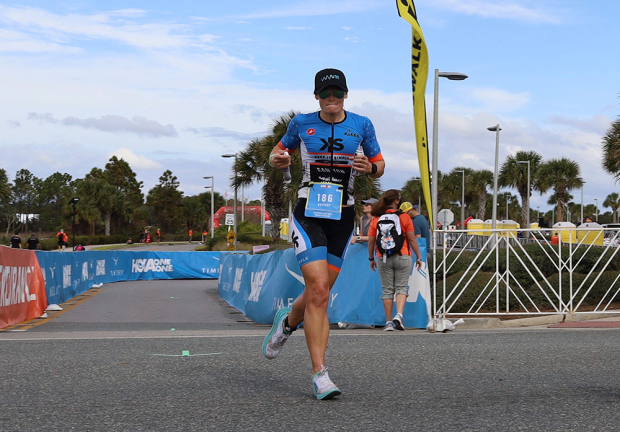
ST: Did it feel a bit surreal to finish in a pretty much empty finisher chute?
Brittany: It was definitely strange not having people in the finish chute. If it’s what we have to do in order to race, then I don’t mind too much. I do feel bad for all the first timers because there is something special about having the finisher chute lined with cheering people. Hopefully next year can get back to some sort of normal.
ST: How did you celebrate?
Brittany: It was so cool to get to my phone a few hours later and see all the messages I had gotten from family and friends. Seeing all of their support was a celebration and emotional boost in itself. Other than that, the usual celebratory meal and drinks with family and friends.
ST: Last fall you were the top female finisher at IRONMAN 70.3 Superfrog. How do these titles compare?
Brittany: Superfrog was a great race. In a way it’s similar with a rough swim and flat bike course. Although it’s a 70.3, I think the run is more challenging with all the soft sand. I am bummed that race was discontinued and hope they bring it back eventually. It is cool to be the last women’s champion though.
ST: What result of yours means the most to you and why?
Brittany: Both my Florida and Superfrog wins mean a lot to me. Florida is my proudest effort at the moment. I have worked really hard the past few years, especially this season, and I think this race was a celebration of that. I also enjoy the full Ironman distance a lot more and think it suited me best. Superfrog was also exciting because I think that was a breakthrough for me in the 70.3 distance. It was also special for me because that race supports the Navy Seal Foundation and my partner, Taylor, is in the NSW (Naval Special Warfare) program. So it was pretty special to win that.
ST: What is next?
Brittany: I am in the off-season phase of my training right now. The training schedule is a little lighter, meaning my dog Turtle will most likely have more adventures at the local dog beach and hikes.
As far as racing I will have Oceanside 70.3, Ironman Coeur D’Alene, 70.3 World Championship, and then Kona. Our big focus will be improving my run and if all goes to plan, I will start racing in the pro field after Kona. This is all pending racing goes on as scheduled.
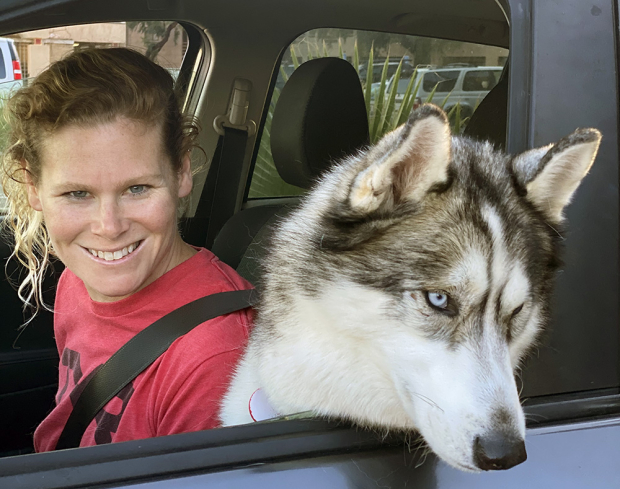
ST: Is there anything else we should know about you?
Brittany: I don’t think there is anything else, except that I truly love meeting and helping people in the sport of triathlon. It’s a pretty tough sport to navigate with all of the moving parts. So anyone is welcome to reach out with any questions they may have about training, races, etc.
I also want to thank Ironman for finding a way to make this race happen, Panama City Beach for welcoming us, and all of the amazing volunteers that made the race happen. And special congratulations to all of the competitors.


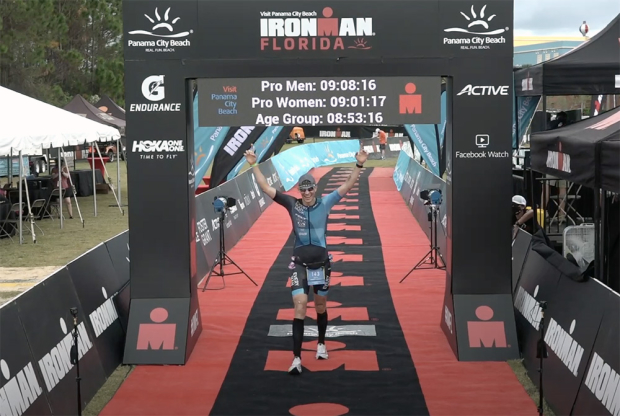
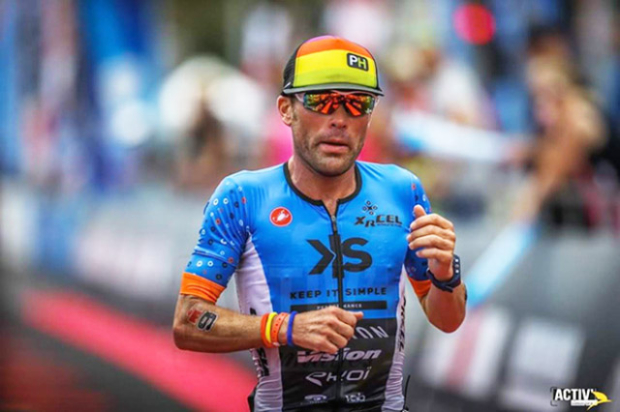
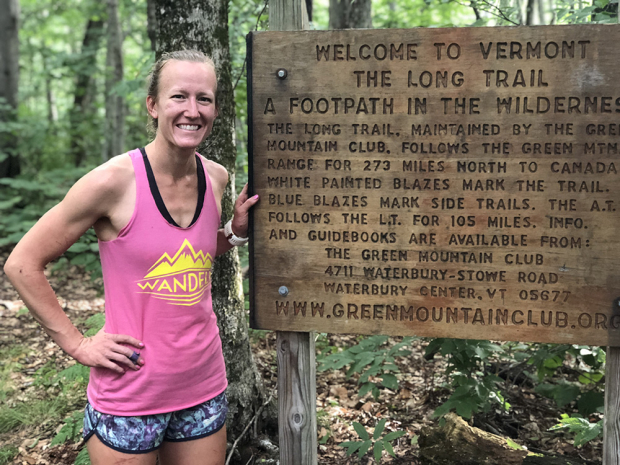
Start the discussion at slowtwitch.northend.network